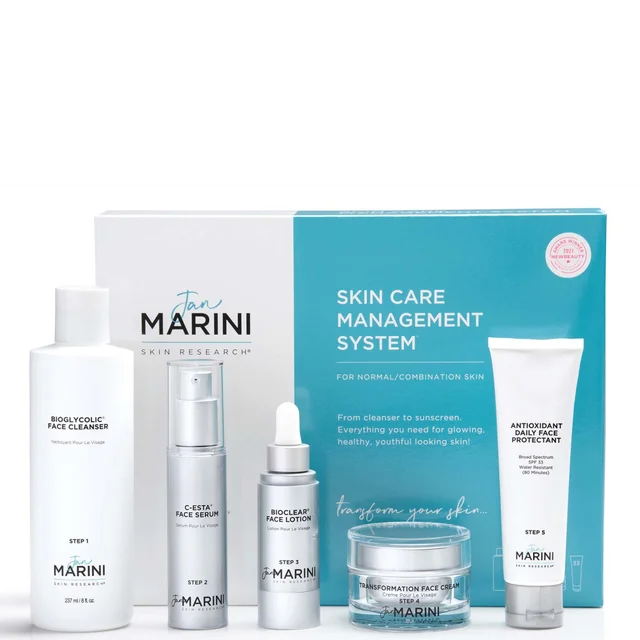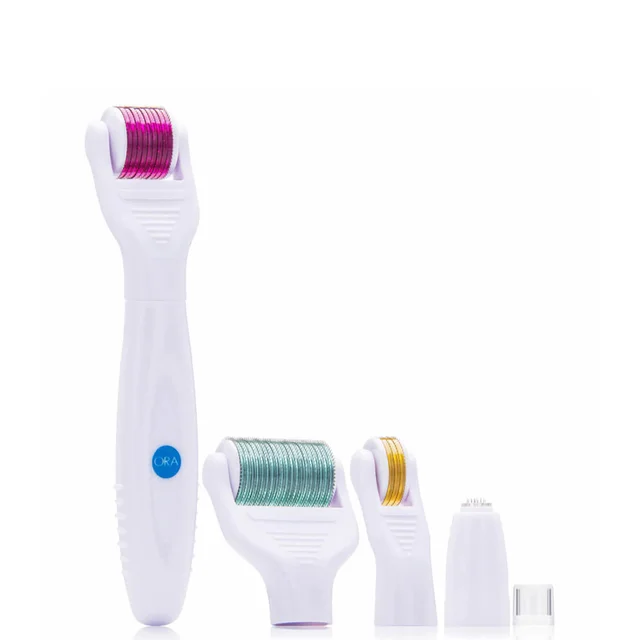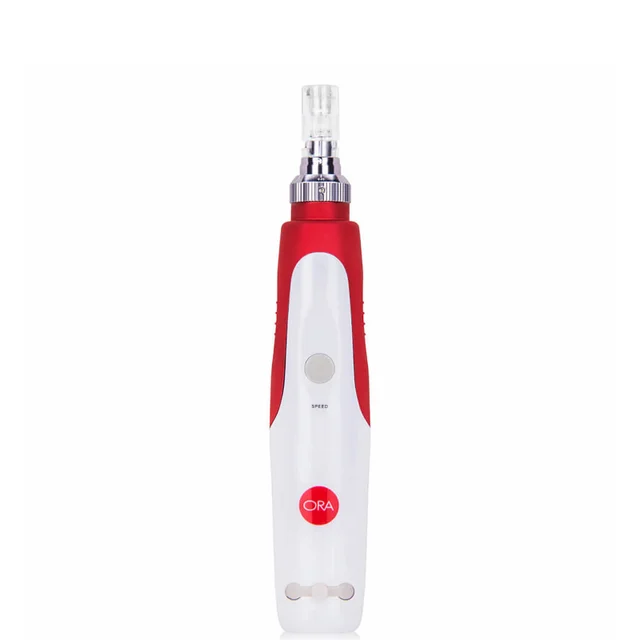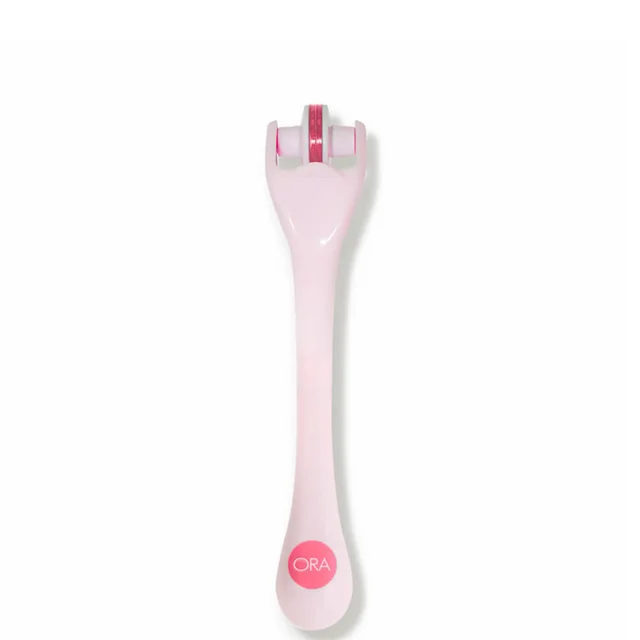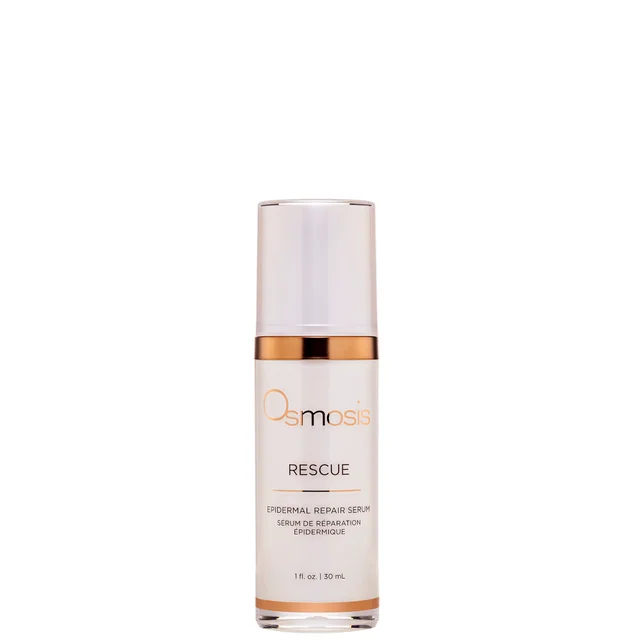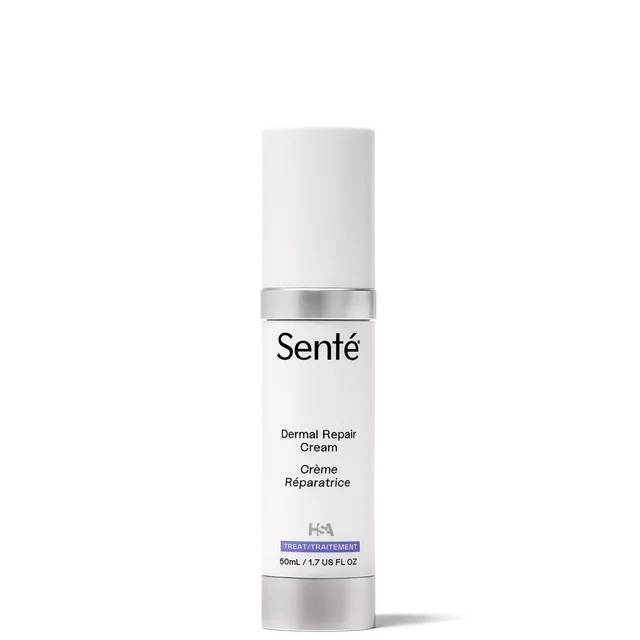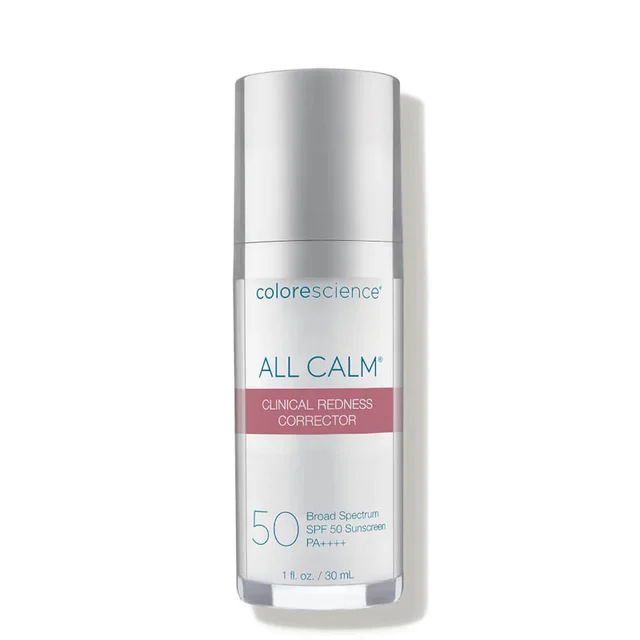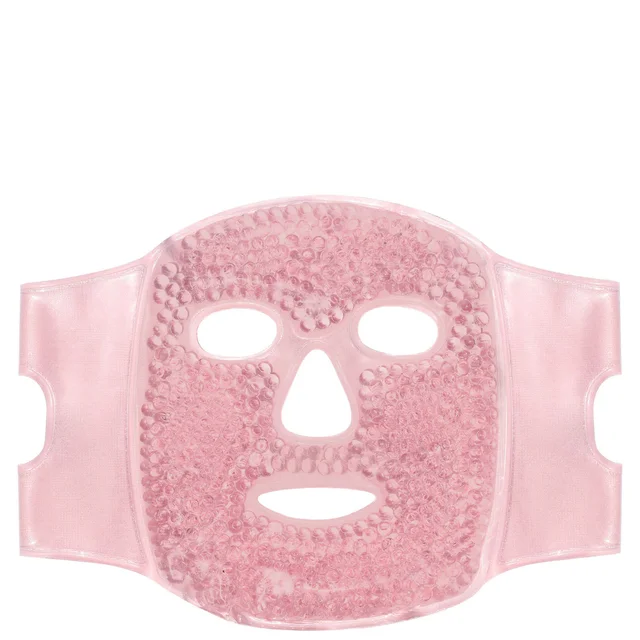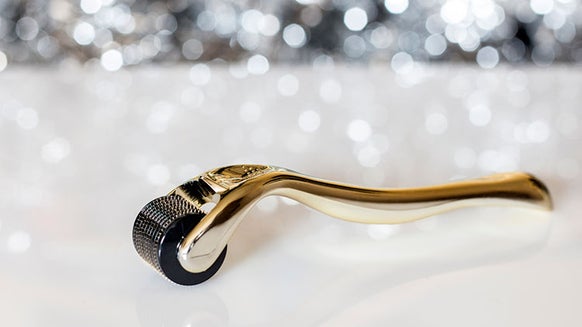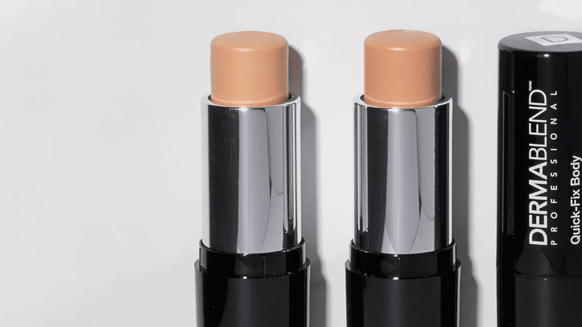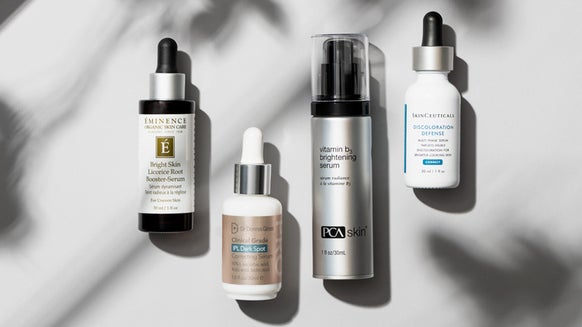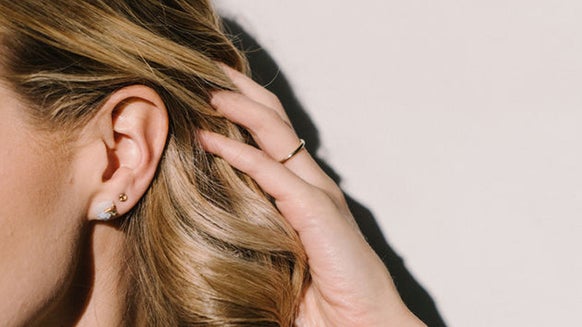Should You Try Microneedling at Home? Here’s What a Derm Wants You to Know First
Getting your face poked by hundreds of tiny needles may not be your idea of a good time. Your skin, however, may feel otherwise. Intimidating name aside, microneedling has gone from being the niche in-office procedure you warily ask your dermatologist about to the latest buzzword in at-home skincare routines. It promises smoother skin, fewer fine lines, and even the improvement of stubborn acne scars. And the best part? It does it all without pain and major downtime.
Here's the thing: trying out microneedling seems like a no-brainer at this point, but skin experts say you may need to rein in your excitement just a tad—at least until you’ve fully understood the science behind the procedure and the crucial steps you can’t afford to skip. So with that, allow us to save you a trip down the microneedling rabbit hole. Below, we break down exactly how microneedling works, what results you can expect, and what newbies should know to stay safe and see actual results—straight from a dermatologist.
Meet the Expert
- Dr. Connie Yang - Board-certified dermatologist and member of Dermstore’s Medical Advisory Board
What is Microneedling?
“Microneedling is a minimally invasive procedure that uses fine needles to create controlled micro-injuries to the skin to stimulate your body’s natural wound-healing response,” explains Dr. Connie Yang, board-certified dermatologist and member of Dermstore’s Medical Advisory board. This process triggers the skin’s natural healing process and stimulates renewal beneath the surface—kind of like baiting the body to produce more collagen and elastin (which is why it’s also known as collagen induction therapy). Originally, microneedling used to be confined in dermatologists’ offices, but advances in skincare have made it more accessible with the introduction of microneedling devices designed for at-home use.
In-office microneedling can penetrate the skin deeper and is typically paired with serums for enhanced results. At-home versions, on the other hand, use even shorter needles designed to only reach the skin’s surface, making them ideal for mild texture concerns and fine lines that have just started to emerge.
What Skin Concerns Does Microneedling Target?
Aside from being painless, quick, and accessible, another one of microneedling’s claims to fame is its versatility. “Microneedling can help with skin texture, skin tone, fine lines, crepey skin, and acne scars. If you struggle with any of these concerns, your skin could benefit from microneedling,” explains Dr. Yang.
By creating controlled punctures and triggering collagen production, microneedling can help improve a range of skin issues, especially those that topical creams and treatments alone can’t fix. Here are the most common skin concerns that microneedling can effectively target:
Acne Scars: Microneedling helps smooth and soften the look of pitted or textured scars over time. The boost in collagen also helps fill in indented blemishes, resulting in a smoother and more even complexion. Fine Lines and Wrinkles: By spurring new collagen and elastin, microneedling can help restore the skin’s firmness, reduce the appearance of fine lines, and refine crow’s feet, frown lines, and laugh lines with consistent treatment. Enlarged Pores: Regular microneedling sessions can significantly boost collagen production, which can thicken and strengthen the skin surrounding pores and make them appear smaller and tighter. Uneven Skin Tone and Hyperpigmentation: Microneedling speeds up skin cell turnover and breaks up uneven skin pigmentation, making it helpful in fading post-acne marks and dark spots. Rough Patches or Uneven Skin Texture: By spurring on the skin’s natural repair process, microneedling can help renew the skin’s surface and smooth out concerns like post-acne bumps and uneven texture. Stretch Marks: If started early on, microneedling can help make stretch marks less visible by stimulating new collagen in these scarred bands of skin. Sagging, Loose, or Crepey Skin: Skin laxity becomes more common as collagen levels decline. Microneedling counters this with its collagen- and elastin-producing effects, which can help tighten loose or crepey skin. Scarring: Aside from post-acne scars, microneedling can be helpful in softening the appearance of surgical or injury-related scars so that they blend more seamlessly with surrounding skin.
Benefits of Microneedling
Backed by robust clinical evidence and research, microneedling delivers results that complement and go beyond what topical products can achieve. This is particularly true if you’re targeting stubborn scars and signs of aging. “It’s a great way to improve skin quality and skin tone. It also helps to fade acne scars and hyperpigmentation,” Dr. Yang adds. Here are the top benefits of microneedling that make it a true standout:
Fades Acne Scars and Improves Texture: Microneedling stimulates collagen production, which softens the look of pitted scars and smooths rough patches. Reduces Fine Lines and Wrinkles: With consistent treatment or use of an at-home device, microneedling can help firm skin and minimize noticeable lines and creases. Evens Skin Tone: Microneedling has been found to be effective in blurring mild hyperpigmentation and creating a more uniform complexion. Safe for Most Skin Tones: While some lasers and peels can lead to discoloration in certain skin tones, microneedling has a lower risk of post-treatment discoloration, making it suitable for a broader range of complexions. Boosts Product Absorption: The controlled micro-injuries created during the procedure allow active ingredients to penetrate more deeply and help amplify their effects. Minimal Downtime: As a procedure, microneedling is well-tolerated by most skin, and it’s especially true for at-home devices. Some users may experience mild redness or sensitivity for one or two days, which can sometimes come with flaking and dryness that resolve quickly. Complications and serious side effects are also uncommon as long as it’s performed correctly and proper pre- and post-treatment skincare are followed.
How to Prep Skin for Microneedling
How you prep your skin can either set you up for success or lead to unwanted reactions. It’s an essential step to ensure safe and effective microneedling, reveal visible results, and minimize side effects. “Make sure to remove all makeup and skincare products from the skin with cleanser. Then, prep the treatment area thoroughly with alcohol wipes,” says Dr. Yang. Here are more essential tips to remember:
Hit Pause on Potent Actives: Give your skin a break from active ingredients like retinol, exfoliating acids (AHAs and BHAs), and other potent treatments two to three days before microneedling. Boost Skin Hydration: Make sure to double down on drinking plenty of water and using a hydrating moisturizer days ahead of microneedling to prevent dryness and flaking post-procedure. Keep Skin Bare: Microneedling should be done on clean, dry skin so avoid applying serums, creams, or oils before the procedure. Protect Skin from the Sun: Sunburned skin is more sensitive to irritation, so make sure to use a broad-spectrum SPF during the day and sunscreen for acne-prone skin if you’re prone to breakouts. Disinfect Device: Follow your device’s cleaning and disinfecting instructions before and after each use. Consider a Numbing Cream: If you’re worried about discomfort, use a dermatologist-approved numbing cream. Once it has taken effect, cleanse your skin thoroughly before going ahead with your session.
How to Care for Skin After Microneedling
Whether it’s in-office or at-home, microneedling can make the skin feel extra sensitive afterwards, so what you do next matters just as much as the treatment itself. To help your skin bounce back quickly and achieve your desired results, Dr. Yang has these tips:
Hold Off on Actives: Give your skin a break from heavy-hitting ingredients like retinol and chemical exfoliants for the next 24 to 48 hours after treatment. Keep Bacteria At Bay: That means avoiding vigorous activities that can make you sweat, touching your face, or wearing makeup for at least a day. Cleanse Gently: Opt for the gentlest cleanser and use lukewarm water to rinse your face. Maintain Hydration: Use a gentle, post-procedure-approved moisturizer or serum with hyaluronic acid. Prioritize Sun Protection: Microneedling makes your skin more susceptible to sun damage, so if you can’t stay in the shade for the rest of the day, make sure to use a broad-spectrum SPF and wear a physical barrier like a wide-brimmed hat to prevent UV exposure. Observe How Your Skin Reacts: It’s not uncommon to experience mild redness, dryness, flaking, or tightness after microneedling. However, if you’re noticing excessive irritation or swelling, consult your dermatologist.
Best Microneedling Devices & Aftercare
1. Jan Marini Skin Care Management System - Normal to Combination
A complete 5‑step at-home regimen specifically for combination skin, this set gently cleanses, renews, resurfaces, hydrates, and protects. It tackles free‑radical damage, hyperpigmentation, and aging to help you maintain a smoother and younger-looking complexion.
Key Ingredients: Aloe Vera, Glycolic Acid, Hyaluronic Acid, Peptides, Vitamin C, Vitamin E, Salicylic Acid
Skin Type: Combination, normal, acne-prone, mature
Skin Benefit(s): Brightens dull skin, improves texture, evens tone, refines pores, minimizes fine lines and wrinkles, boosts hydration
Beauty Insider Tip: After microneedling, introduce the system gradually by starting with the gentlest steps and incorporating actives last.
2. Beauty ORA Microneedle Face Full Body Roller Kit (6 Piece)
This at-home microneedling kit includes varying needle lengths to target face and body concerns like scarring, stretch marks, and uneven texture. Featuring fine titanium needles and an ergonomic design, it keeps treatments safe and precise, revealing healthier skin from head to toe.
Skin Type: All skin types
Skin Benefit(s): Boosts collagen, improves product absorption, smooths texture, firms and smooths
Beauty Insider Tip:Always start with the shortest needle to build tolerance, and use a hydrating cream or serum afterwards.
3. Beauty ORA Electric Microneedle Derma Pen System (4 Piece)
This electric derma pen with adjustable needle depth and interchangeable cartridge tips offers precise microneedling to target fine lines, scars, and texture while enhancing serum delivery.
Skin Type: Mature
Skin Benefit(s): Stimulates collagen and elastin production, smooths texture, enhances penetration of active ingredients, refines signs of aging
Beauty Insider Tip: While this derma pen is safe for most skin types, especially mature skin, it’s best to avoid using this device on overly sensitive areas or where there is an active breakout.
4. Beauty ORA Lip Plumping Roller - Pink and White (1 Piece)
A gentle lip roller with micro-needles that stimulate circulation and create a naturally plumper pout. Easy to use before bedtime, it boosts product absorption and smooths fine lines around the mouth.
Skin Type: All skin types
Skin Benefit(s): Enhances lip volume and plumpness, softens fine lines, boosts absorption and penetration of skincare products
Beauty Insider Tip: Use on clean, dry lips before applying a hydrating or peptide-based lip serum for best results.
5. Osmosis +Beauty Rescue Epidermal Repair Serum
The hero of post-procedure skin, this serum is packed with a patented anti-inflammatory ingredient that hastens and supports the skin’s natural healing process. It’s lightweight, non-irritating, and ideal for microneedled skin, it repairs micro-injury, reduces inflammation, and helps repair the skin barrier.
Key Ingredients: Ozonized Ethyl Oleate (Trioxolane)
Skin Type: All skin types
Skin Benefit(s): Activates skin repair, accelerates healing, calms irritation and corrects redness
Beauty Insider Tip: Not just for post-treatment skin, this serum also delivers calming and comforting benefits to acne- and rosacea-prone skin.
6. Senté Dermal Repair Cream
A go-to for soothing post-procedure skin, this luxe cream speeds up skin recovery while amping up hydration. Lightweight and ultra-nourishing, it’s ideal for calming inflammation and rebuilding the skin barrier after microneedling.
Key Ingredients: Heparan Sulfate Analog (HSA), Green Tea Extract, Sodium Hyaluronate
Skin Type: Normal, sensitive
Skin Benefit(s): Hydrates deeply, restores skin barrier, diminishes fine lines and wrinkles, improves skin tone, calms sensitivity
Beauty Insider Tip: Use it as a nighttime moisturizer during your recovery week to lock in hydration.
7. Colorescience All Calm Clinical Redness Corrector SPF 50
Color-correcting, UV-protecting, and calming at the same time, this mattifying treatment slash primer blends seamlessly into skin while reducing visible redness. Infused with niacinamide, antioxidants, and zinc oxide, it’s ideal for those days when your skin might be flushed, whether due to acne, rosacea, or microneedling.
Key Ingredients: Niacinamide, Vital ET, Vitamin E, JOjoba, Zinc Oxide, Titanium Dioxide
Skin Type: Acne-prone, sensitive
Skin Benefit(s): Soothes and reduces redness, calms irritation, mineral sun protection
Beauty Insider Tip: Dab gently using your fingers to avoid aggravating freshly microneedled skin.
8. Skin Gym Cryo Chill Ice Beaded Face Mask
This ultra-cooling mask is the perfect post-treatment pal for skin that needs immediate comforting and depuffing. It features chilled beads that help calm inflammation, tighten pores, and reduce redness. Think of it as a cryotherapy facial straight from your own fridge.
Skin Type: All skin types
Skin Benefit(s): Reduces redness, calms inflammation, minimizes puffiness, rejuvenates and refreshes skin
Beauty Insider Tip: Pop it in the fridge 30 minutes before use, and wear it after cleansing for instant relief.
9. EltaMD UV Skin Recovery Red Color Correcting Green Tint Broad Spectrum SPF 50
This fragrance-free mineral sunscreen was made with post-treatment skin in mind. It shields your skin from sun damage without the sting, extra grease, white cast, and potentially clogging your pores.
Key Ingredients: Zinc Oxide, AA Complex Technology (Amino Acid), Ceramides, Centella Asiatica
Skin Type: Sensitive, post-treatment skin
Skin Benefit(s): Immediately reduces visible redness, calms damaged and post-procedure skin, dermatologist-tested, broad-spectrum mineral UV protection
Beauty Insider Tip: With its green tint, this sunscreen subtly neutralizes redness without looking heavy.
Microneedling FAQs
How often should you microneedle?
It depends on how well your skin tolerates microneedling. At-home devices typically reveal results with treatments every two to four weeks. Longer needles, on the other hand, require longer downtime. “The more superficial the needles, the less trauma there is to the skin, and the more frequently you can perform the microneedling,” says Dr. Yang. “I generally recommend no more than once per week for at-home microneedling devices. For deeper in-office treatments, it’s best to perform this every four to six weeks.” As a rule, always make sure your skin has fully recovered before going for your next session to prevent damaging your skin barrier.
How long do the results from microneedling last?
Results from microneedling can vary from person to person, depending on age, skin condition, and severity of the concern. With at-home microneedling devices, results are typically more subtle and gradual than in-office treatments. “More superficial gentle microneedling (at-home kits) can give subtle results over the course of several months. In-office microneedling can give more robust and longer-lasting results,” explains Dr. Yang.
How to choose the right microneedling device?
With all the available options for at-home microneedling devices, we understand that picking one out for the first time can be quite overwhelming. After all, not every dermaroller or microneedling pen is built the same, so it’s worth investing in quality to ensure safety and real results. Here’s what to look for:
Go for Trusted Brands: Choose devices that are FDA-cleared or recommended by dermatologists to ensure safety.Appropriate Needle Length: At-home devices should have needles that are no more than 0.5 mm in length. Anything longer should only be used by professionals.Manual or Automated: Automated microneedling pens come at a higher cost but offer more consistency and comfort. Meanwhile, manual dermarollers require steady hands but are friendlier on the pocket.Talk to Your Dermatologist: Always ask your dermatologist if you have doubts or concerns about using an at-home microneedling device, especially if you have underlying skin concerns or are prone to sensitivity. Talking to your dermatologist also ensures you are using the right technique and prevents infection and too much damage to the skin, says Dr. Yang.
The Bottom Line
Microneedling may just be the closest we’ll ever get to a skincare miracle—without even needing to leave home. When done correctly and carefully, it’s one of the few at-home treatments that can actually improve texture, scarring, and the first signs of aging. The secret to achieving your desired results, according to experts, is to make sure you choose the right device, prepare your skin accordingly, and follow through with good aftercare. Microneedling results build gradually—not overnight—and need to be maintained, so as with any skin treatment, consistency is key, and patience pays off. And if you have sensitive or acne-prone skin, don’t skip sunscreen for acne-prone skin as part of your routine to keep your progress on track.

Janeca Racho is a Journalism graduate with over 15 years of writing experience. After getting her start in public relations and advertising, she made the switch to freelance writing and began working for various lifestyle, fashion, and travel brands. Her love for all things skincare has led her to beauty reporting and research for the last ten years. Writing for several hair and beauty blogs, she reports on anti-aging staples, trending brands and products, must-have ingredients, and health and wellness.
